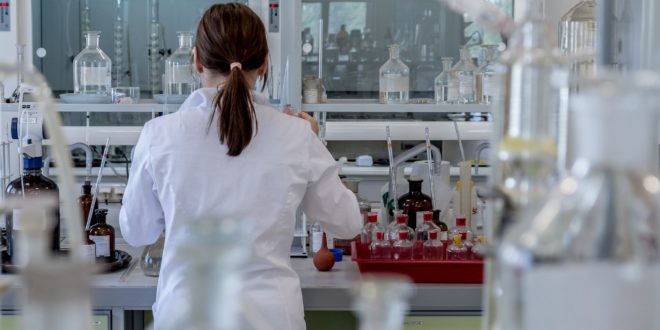Limiting the environmental print of your lab can be tricky, especially with the massive amounts of often non-sustainable single-use resources, which makes it difficult to recycle or reuse equipment.
However, implementing sustainable and energy-saving measures has become necessary in a world haunted by a climate crisis. Indeed, the lab industry is now gravitating toward an eco-friendly approach that strives to minimize waste and reduce energy consumption.
Here are a few energy-efficient and environmentally safe tips to reduce the environmental impact of your lab:
Transition To Renewable Energy for Your Lab
Renewable energy depends on non-finite resources to secure electricity. In a study funded by the Office of Energy Efficiency and Renewable Energy at the U.S. Department of Energy, the current available renewable energy technologies can supply 80% of U.S. electricity production in 2050 if used with flexible electric systems.
Solar power is currently one of the most used and popular renewable energy sources for heating, cooling, or lighting in residential communities and commercial buildings. By installing solar cells or photovoltaic cells that convert sunlight to energy, you can use solar power and electricity to operate lab appliances with heating or cooling functionalities. Moreover, you can operate PCs or charge laptops to significantly reduce electricity consumption and cut down on monthly electricity bills.
Go Paperless
Despite the increasing digitalization of data in every field, computers have not fully replaced paper. However, working toward a more ‘paperless’ approach benefits the environment and the data collection and analysis process in the lab.
For example, some lab instruments generate sample information or data, which is often still collected by hand. That increases the probability of human errors and renders data-compiling processes repetitive and time-consuming since there is no specific data collection system to ‘join’ the data from each sample.
Therefore, implementing lab management software is essential to achieve seamless data collection and sample metadata analysis while eliminating human errors and reducing paper purchasing costs.
Save Water
According to research conducted by the University of California, Berkeley, in 2010, labs account for 18% of the entire campus’s water usage, including residences and other university buildings. Several cost-efficient improvements can be implemented to save water consumption in the lab:
Installing aerators
As simple as it might sound, aerators can notably decrease up to half of your water consumption without affecting water usage.
Moderately use autoclaves
Autoclaves consume up to 60 gallons of water per cycle, so it is best only to run autoclaves when fully packed to limit wasted water from each cycle.
Replace once-through (OTC) cooling systems
Often used to cool chemical reactions, once-through cooling systems waste large amounts of water. OTC systems can be replaced with pumps to recirculate the water or air-cooled condensers that replace the water usually needed in OTC systems.
Turn Off Unused Equipment or Appliances in The Laboratory
According to I2SL, the International Institute for Sustainable Laboratories, laboratories often consume 3 to 4 times more energy than office buildings, which comprise 60% of non-residential electricity consumption.
While the nature of lab work calls for operating several machines or equipment for an extended time, some instruments can be turned off when not in use or (obviously) at the end of a working day.
For example, when not needed, you can turn off computers, microscopes, or autoclaves. Another example is installing auto sash controllers equipped with a movement sensor that continually monitors the work area in front of the fume hood. The auto sash will close once it detects no movement, which contributes to improving personal safety in the lab and minimizing energy consumption and costs.
Recycle and Reuse As Much As Possible
Some reagents or equipment cannot be reused, limiting the lab’s possible recycling measures. However, there are a few steps that can promote an environmentally-conscious lab culture without risking the integrity of the experiment’s findings:
Glass instead of plastic
Opt for glass equipment (such as pipettes, Petri dishes, tubes, etc.) instead of disposable plastic equipment or tools. Although not particularly cheap, glass is more cost-effective than plastic since it can be washed and then reused when possible.
Reusing packaging boxes
Instead of disposing of packaging boxes for equipment or tools, pipette tip boxes, for example, can be reused as storage containers in the lab instead of purchasing specific containers.
Recycling solvents
solvents such as methanol, ethanol, and acetone that are usually used for rinsing glassware can be recycled by participating in Solvent Recycling Programs. These programs strive to reduce hazardous lab waste and its environmental impact in the process.
Conclusion
Science labs are very energy-intensive facilities that also contribute to a sizeable amount of waste. In light of a compelling climate crisis, the lab industry is constantly seeking new ways to employ more environmentally-friendly applications to maximize energy saving and minimize our carbon footprint.
BIO
Chloe Stamenkovic is a life science research analyst collaborating with Reader’s Digest, eLabNext, Dataversity & others. Having strong molecular biology, analytical & data science modeling skills she manages project initiatives to elevate the knowledge in technology solutions for laboratories, in order to increase efficiency in the lab. She focused on all topics regarding biotech but most recently specializing in topics such as digital health, lab digitization, ELN/LIMS, AI, Machine Learning, and automation’s role in developing novel therapeutics.



